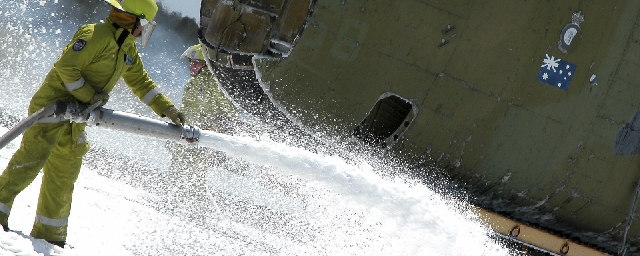PFAS: Emerging contaminants of concern
Per- and Polyfluorinated Alkyl Substances (PFAS) are described as ‘emerging contaminants’ within the environmental industry as their potential to cause harm to human health and the environment is now becoming apparent. For decades, PFAS, including Perfluorooctane sulfonate (PFOS) and Perfluorooctanoic acid (PFOA), have been widely used in hundreds of manufacturing and industrial applications.
Uses of PFOS and PFOA
PFAS compounds impart useful properties, including fire resistance and oil, stain, and water repellence. In Australia, they are mainly used in fire-fighting foams, metal plating, hydraulic fluid in aircraft and surfactants for the photographic industry. They are also used in consumer products such as non-stick cookware and waterproof clothing.
PFAS do not degrade
PFAS compounds are synthetic chemicals that don’t degrade in typical environmental conditions. They are persistent in soil and groundwater and can migrate significant distances, up to kilometres, and across different media e.g. soil, sediment, surface water and groundwater.
Contaminants of concern
PFAS have been shown to have toxic effects in some animals, and because they do not break down, can bioaccumulate in both animals and humans. In Australia and internationally, there is growing focus on the potential health and environmental risks of PFAS. Following PFAS contamination from fire-fighting chemicals used at Williamtown RAAF Base, the NSW Government has advised nearby residents of the base not to eat fish, prawns or oysters caught in the area.
Regulatory status
As an ‘emerging contaminant’, the supply of new information and regulatory guidance on PFAS is fast-paced and continually evolving. At present, there are no formal regulations for assessment of PFAS in soils and water in Australia. However, the Western Australian Department of Environment Regulation and the NSW Environmental Protection Authority have issued documents that provide interim soil, groundwater and surface water screening levels as well as ‘trigger point values’ to help prioritise and manage sites.
Sites at risk
While there is a lengthy list of potentially contaminating industries and land uses that could lead to the presence of PFAS, airports, fire-fighting training facilities, and factories producing dirt and water repellents, solvents, and food packaging would list PFAS as a potential contaminant of concern.
Assessing and managing PFAS-affected sites
Assessment, management and remediation options are available for PFAS contamination. Geo-Logix is currently investigating PFAS contamination and providing high level advice on several priority sites across NSW and QLD. Geo-Logix is also actively involved in remediation trials using cutting edge techniques to reduce the concentration of PFAS compounds in water.

